
Rare image of Tatooine-like planet is closest to its twin stars yet
Rare image of Tatooine-like planet is closest to its twin stars yet
Northwestern University astronomers have directly imaged a Tatooine-like exoplanet, orbiting two suns
- Science

Northwestern University astronomers have directly imaged a Tatooine-like exoplanet, orbiting two suns


CIERA’s Vicky Kalogera was the subject of a newly released conversation on the HerStories Podcast, hosted by Maria Doughty, President and CEO of The Chicago Network.
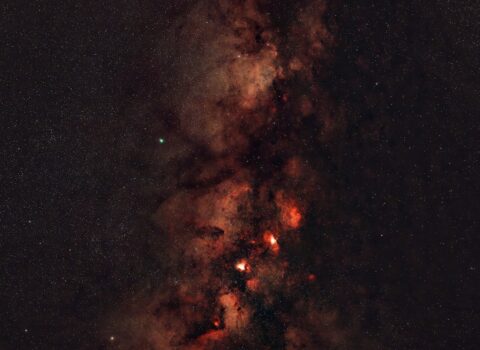

As comet C/2025 R2 (SWAN) made its closest approach to us, it passed in front of the core of our galaxy. In this wide-field image of the comet on October 19, Comet SWAN is the bright green dot on the left. To the right, the bright Eagle Nebula and Swan Nebula are in view along with several star clusters. CIERA Graduate Student Imran Sultan captured this image from dark skies in northern Illinois, using a 50mm camera lens and a filter that isolates light emitted by ionized gas in nebulae in our galaxy.
Imran Sultan/Northwestern/CIERA
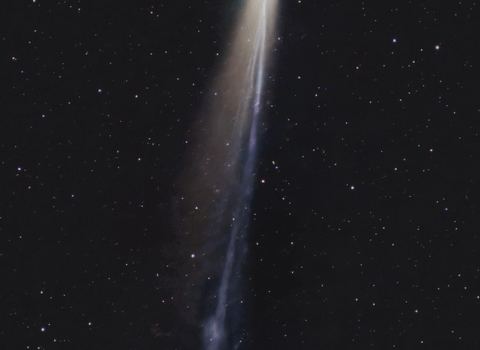

This image of Comet C/2025 A6 (Lemmon) was captured in the early morning of October 14 by CIERA Graduate Student Imran Sultan. This was shortly before the comet made its closest approach to our planet on October 21. The comet’s green coma, and long dust and ion tails, are prominent. Imran took the image remotely using a telephoto camera lens system installed at a remote observatory under dark skies in Texas.
Imran Sultan/Northwestern/CIERA
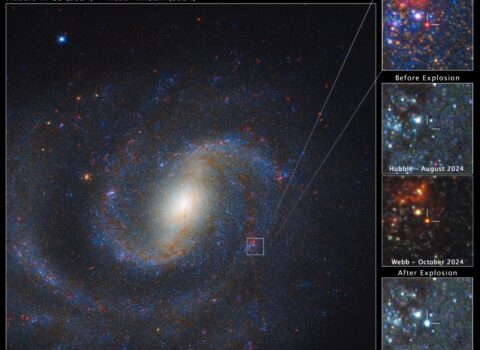
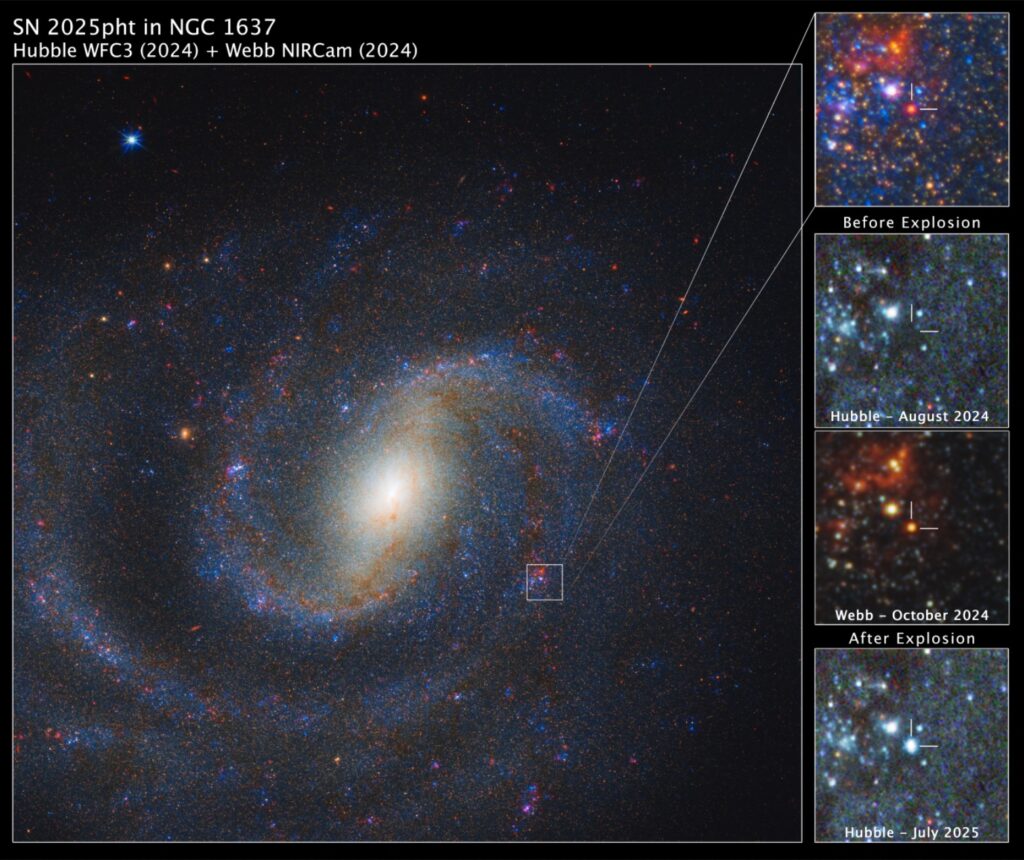
The main image at the left shows a Webb and Hubble view of spiral galaxy NGC 1637. Panels at the right show a detailed view of a red supergiant star before and after it exploded. Before exploding, it is not visible by Hubble, only by Webb. Hubble shows the glowing aftermath.
Credits: Image: NASA, ESA, CSA, STScI, C. Kirkpatrick (Northwestern), Aswin Suresh (Northwestern); Image Processing: Joseph DePasquale (STScI)


A cone-shaped cavity defined by an absence of cold gas points to a hot plasma wind blowing out from Sagittarius A*.
Credit: M. D. Gorski/E. Murchikova

CIERA astronomer Adam Miller, Director of the LSST-Discovery Alliance Data Science Fellowship Program at the Rubin Observatory, shares why he is waiting with bated breath for the first images from this groundbreaking telescope, set to be unveiled on Monday. Miller explains that this moment marks the dawn of an entirely new era in astronomy—one defined
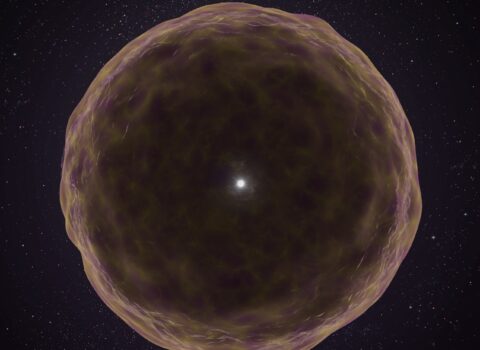
An international team of scientists, led by Northwestern University astrophysicists, has detected a never-before-seen type of exploding star, or supernova, that is rich with silicon, sulfur and argon. When massive stars explode, astrophysicists typically find strong signatures of light elements, such as hydrogen and helium. But the newly discovered supernova, dubbed SN2021yfj, displayed a startling
W.M. Keck Observatory/Adam Makarenko

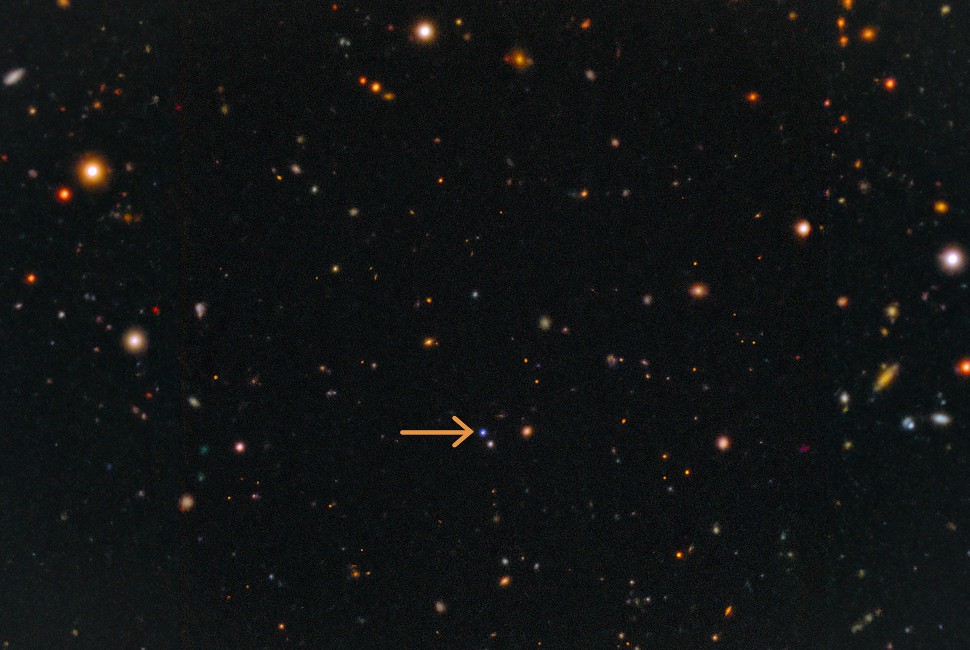
An international team of astrophysicists, led by Northwestern University and the University of Leicester in England, has uncovered a possible origin of fast X-ray transients (FXTs) — mysterious, fleeting bursts of X-rays that have long puzzled astronomers. Using a combination of telescopes around the globe and in space, the team studied the closest FXT associated


CIERA’s Tjitske Starkenburg, Northwestern Research Assistant Professor in the Department of Physics and Astronomy, and Assistant Director for Research Operations at SkAI Institute, shares her excitement about Rubin Observatory’s First Light Watch Party and the new science that will result.
Credit: Lisa La Vallee, Director of Marketing and Events, CIERA
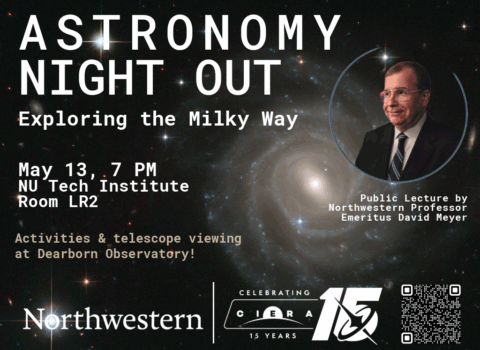
On Tuesday, May 13, 2025, the Center for Interdisciplinary Exploration and Research in Astrophysics (CIERA) welcomed more than 260 astronomy enthusiasts to its 4th annual Astronomy Night Out—a celebration of science, community, and the night sky. Hosted on Northwestern University’s campus, the event featured a captivating public lecture, hands-on science activities, and stargazing through the historic Dearborn Observatory telescope. The evening’s

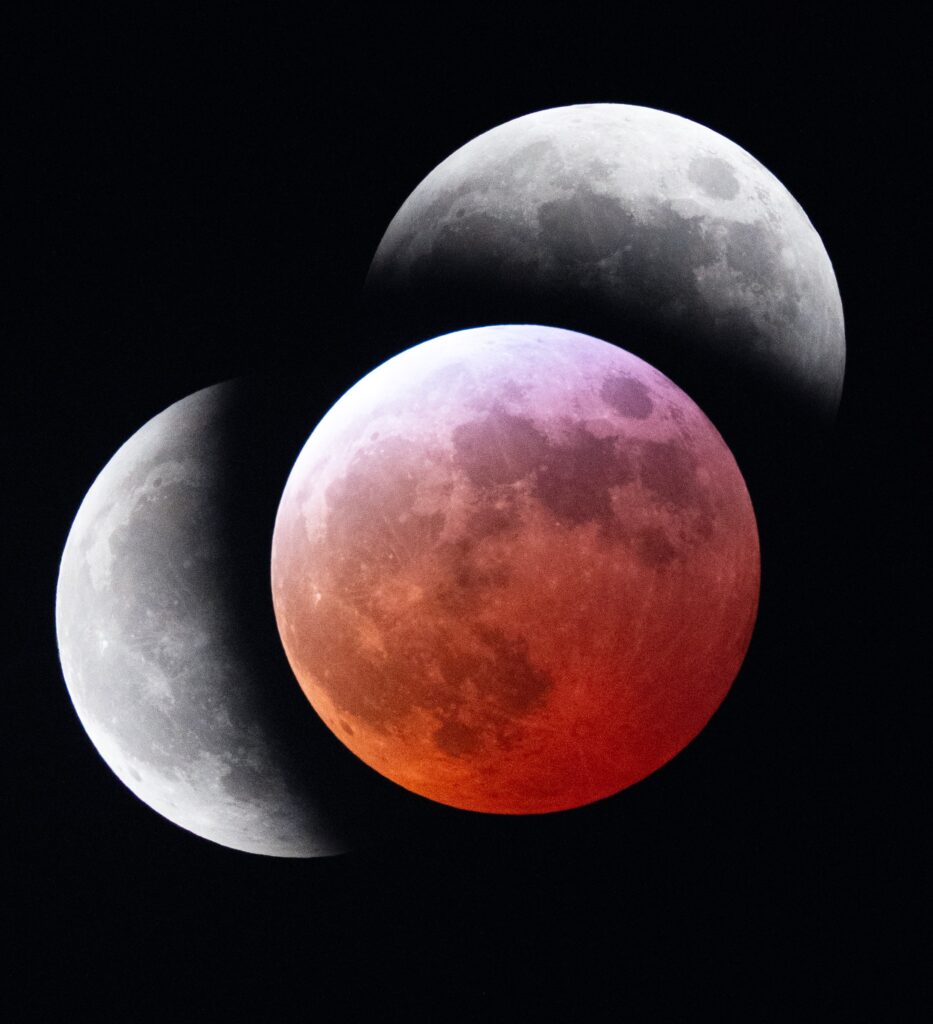
The blood moon was visible during a total lunar eclipse, when Earth cast its shadow over the moon. This photo was taken by CIERA graduate student Imran Sultan, amateur astrophotographer and member of Professor Claude-André Faucher-Giguère‘s research group. Sultan photographed the entire event, which lasted about four hours early Friday morning (12-4am), using a refractor
Imran Sultan/Northwestern/CIERA
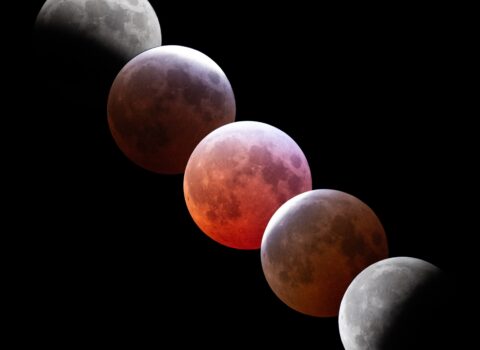

The blood moon was visible during a total lunar eclipse, when Earth cast its shadow over the moon. This photo was taken by CIERA graduate student Imran Sultan, amateur astrophotographer and member of Professor Claude-André Faucher-Giguère‘s research group. Sultan photographed the entire event, which lasted about four hours early Friday morning (12-4am), using a refractor
Imran Sultan/Northwestern/CIERA
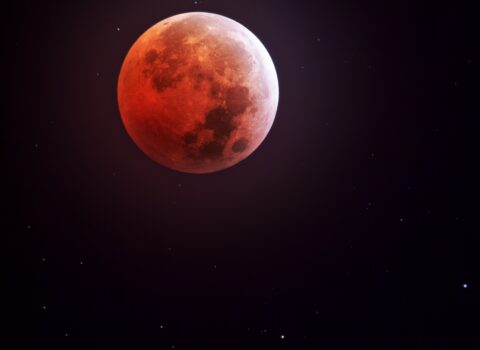
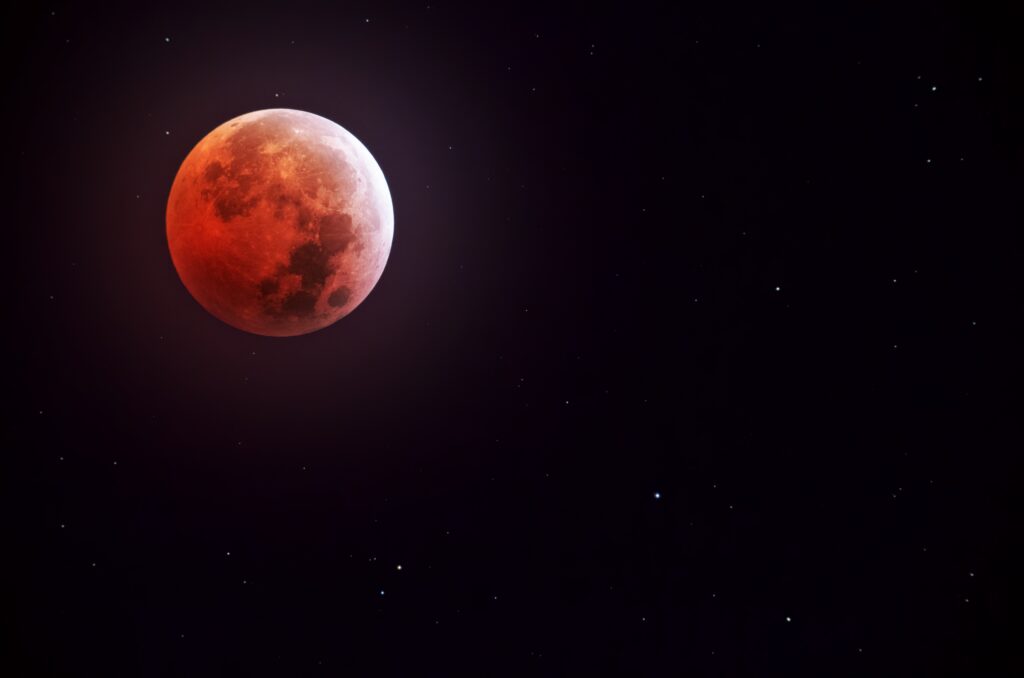
The blood moon was visible during a total lunar eclipse, when Earth cast its shadow over the moon. This photo was taken by CIERA graduate student Imran Sultan, amateur astrophotographer and member of Professor Claude-André Faucher-Giguère‘s research group. Sultan photographed the entire event, which lasted about four hours early Friday morning (12-4am), using a refractor
Imran Sultan/Northwestern/CIERA
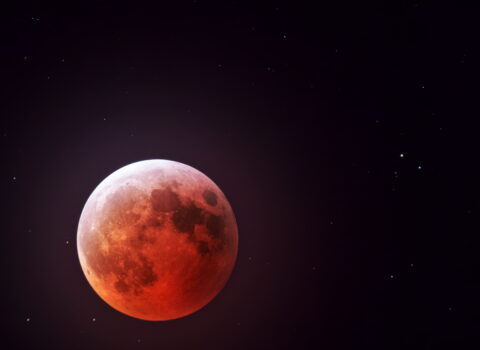
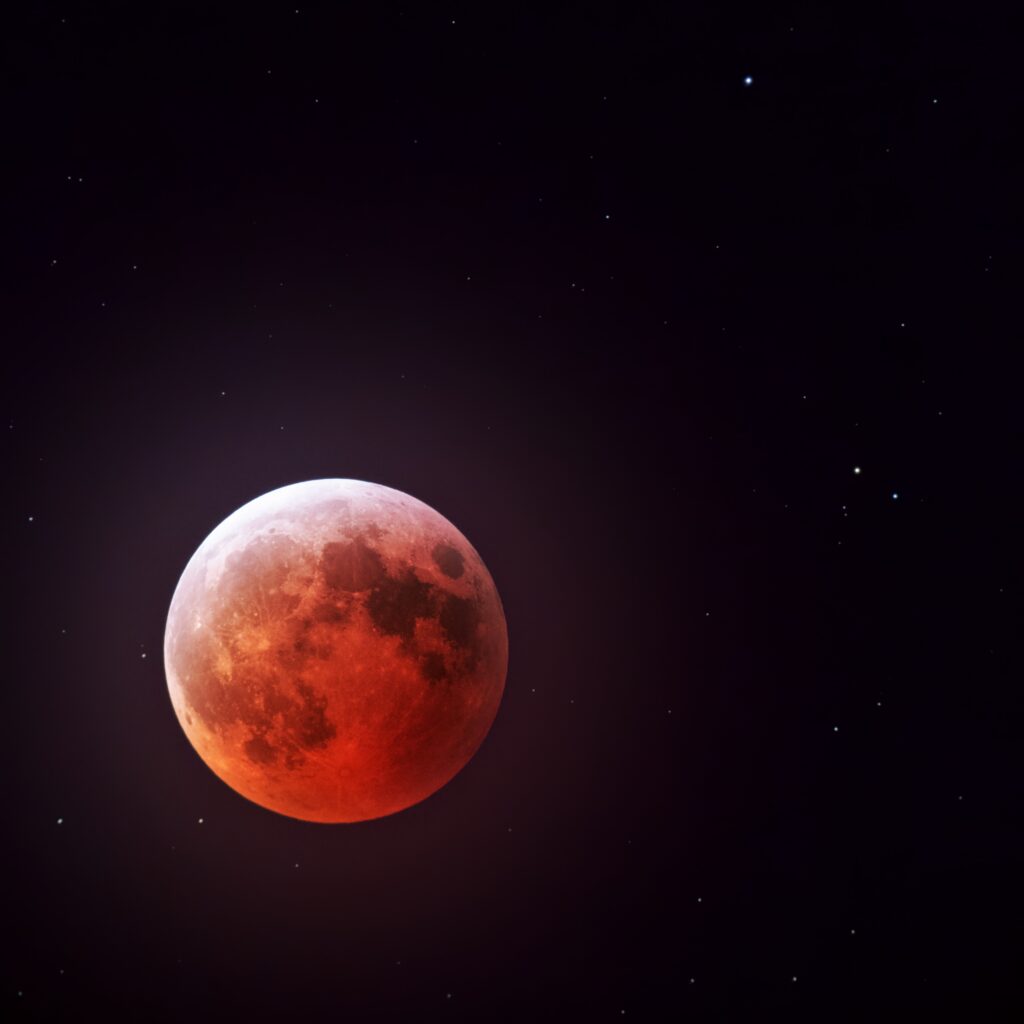
The blood moon was visible during a total lunar eclipse, when Earth cast its shadow over the moon. This photo was taken by CIERA graduate student Imran Sultan, amateur astrophotographer and member of Professor Claude-André Faucher-Giguère‘s research group. Sultan photographed the entire event, which lasted about four hours early Friday morning (12-4am), using a refractor
Imran Sultan/Northwestern/CIERA


This is the largest photomosaic ever assembled from Hubble Space Telescope observations. It is a panoramic view of the neighboring Andromeda galaxy, located 2.5 million light-years away. It took over 10 years to make this vast and colorful portrait of the galaxy, requiring over 600 Hubble overlapping snapshots that were challenging to stitch together. The
NASA, ESA, Benjamin F. Williams (UWashington), Zhuo Chen (UWashington), L. Clifton Johnson (Northwestern)
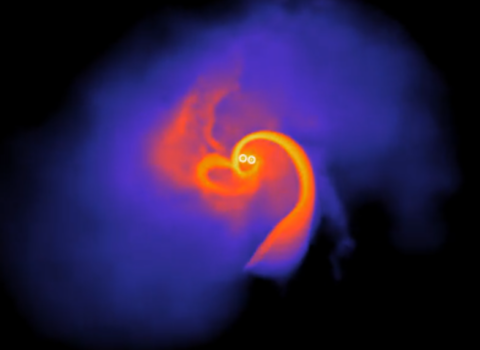

In a study fit for Valentine’s Day, Northwestern University astrophysicists discovered that binary black holes — when formed in crowded clusters of stars — align their spins before merging together. As the black holes orbit one another, each object has its own spin. Previous research indicated these spins should be chaotic and random. However, in
Fulya Kıroğlu (Northwestern University)

In a study fit for Valentine’s Day, Northwestern University astrophysicists discovered that binary black holes — when formed in crowded clusters of stars — align their spins before merging together. As the black holes orbit one another, each object has its own spin. Previous research indicated these spins should be chaotic and random. However, in
Jamie Lombardi / Allegheny College